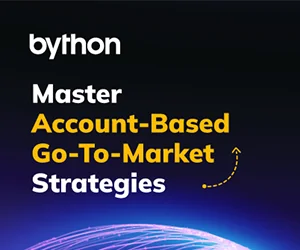Risk is a potential threat to every business but how you manage it or deal with it is important to stop the constant revenue leakage. There are many risks involved in a business. However, financial risk has the highest impact or effect on running business. Financial risks mainly influence your cash flows.
But there are many strategies to anticipate the financial risks and avoid them by having a solid financial risk management plan.
What Is Financial Risk Management?
Financial risk management is the processing of handling and managing anticipated and current financial threats at an enterprise or firm by a good strategic plan that could possibly stop the revenue leakage.
But who creates a feasible financial risk management plan? The financial risk managers do not only anticipate the risks that an enterprise might have to face but also test the possible remedies and evaluate the situation by implementing the solutions. The managers pass over the risks by using certain tools such as financial risk management software.
However, financial risk management plan does not protect a firm from all the financial losses and possible risks. While some risks are expected, the others are behind the stage, unexpected or do not get addressed quickly.
Financial Risk Management Process
Every organization has its own way of controlling financial risks and losses. Their risk management plans and tactics highly depend on the niche, their market value, the type of business, revenue and etc. Here are some general stages in a financial risk management process.
-
Identify the Exposure to Risk
How can you cure risks when you cannot identify them in the first place? You need to identify the risks’ root causes and sources. You can initiate your plan or identify by going over the firm’s annual balance sheet.
This would help you to get aware of the firm’s liquidity, debt, interest rate risk, exposure(1) of foreign exchange and vulnerability of price commodity. Moreover, you would also need to go through all the cashflows records to see how they are fluctuating.
-
Put Numerical Values on The Risk
Risk is uncertain and putting an exact numerical value on it is impossible. However, analysts can use different strategies, such as standard deviation to give an estimated value to financial risk. There are some standard deviation tools that they use to quantify the exposure of a firm to the potential financial risks.
For small enterprises, Excel is used as an efficient financial risk management software for financial analysis.
-
Act According to The Information
After getting done with the quantification of risks, you need to act accordingly. Can the firm afford to run with this risk? And if not, what is the best way to mitigate it? The decisions are based on data-driven results but mostly depends on a firm’s environment, company goals, the cost of mitigation and etc.
Types of Financial Risk Management
There are various ways to categorize a firm’s financial risks. Some of the major types are:
-
Market Risk
Market risk refers to the sudden change in the market that a particular firm competes for. This could dramatically affect the business’s marketplace. However, there is another element of market risk and that is being outmaneuvered by your market competitors. Firms with very narrow profit margins tend to provide an attractive value proposition. This helps them to make a unique place in the market place.
-
Credit Risk
When firms extend the credits to business, they might develop potential credit risks. It can happen with the company’s vendors and suppliers as well. A company must ensure that it has enough cashflows to pay for the bills in a timely manner. Or else, most of the suppliers stop doing business with the firm.
-
Liquidity Risk
It involves funding liquidity and asset liquidity risk. The asset liquidity is basically an element of the ease with which a firm could easily transform its assets into the cashflows. Whereas, operational funding liquidity refers to the daily cash in-flow and cash out-flow. A substantial risk usually occurs when the company does not have liquid cash to cover the expenses or to run as a business. That is why quantifying and measuring risk is very important to a successful business. Usually, the liquidity risk can be reduced by data-driven analysis by the firm’s analysts.
-
Operational Risk
Operational risks are common in every business and might arise due to a firm’s normal business activities. This category includes law suit, personnel problems, model risk, fraud risk and etc. This risk refers to a point where the business model, growth and marketing of a business might be insufficient, incorrect and inadequate.
Financial Risk Management Techniques
Here are some but not all, techniques for financial risk management:
-
Have Proper Amount of Insurance at Backend
The insured firm is a safe firm. You need insurance to make up for the losses you cannot afford to replace. The firm’s insurance money is not used for minor expenses but for higher-paying premiums.
-
Keep Adequate Emergency Funds
Emergency funds work as a protection wall against unexpected financial risks. Keep a dual emergency fund. One for small rainy day potential financial losses and one for big risks. It is better to have adequate savings for 5 to 6 months to cover up all the unexpected losses.
-
Diversify Your Investments
Investment diversification reduces finance annihilation. You need to make multiple diverse investments and regard it as investment insurance that would help you in bad times or on the firm’s rainy days. Diversify Your Investments.
Financial Risk Management Strategies
Financial risk management strategies are hard to put in practice but with time and experience, every firm learns to handle and be prepared for financial risks. Here are some financial risk management strategies for passing over the risks safely:
-
Measure the Financial Risks
In order to have control over your financial risk, you need to take note of every liability on your list. The measurements are nothing but statistical data. So, you need to hire a professional to come up with data-driven data supported by statistics.
-
Invest in Your Skills
Avoid becoming irrelevant or too complacent at your workplace. The finances highly depend on your workforce. So, invest as much as you can for employees’ skills development.
Benefits of Financial Risk Management
- It helps the firm to coordinate and control necessary business data and processes.
- It provides a better understanding of the opportunity for performance measurement and profit sources.
- You can link your economic cycle with the factors of model risk.
Financial Risk Management Problems
Here are some financial risk management problems that might fail your strategy and drag you at the verge of facing potential financial risks:
- Economic factors.
- Your supplier’s or external parties’ decisions and actions.
- Financial instability in the market.
- Legal interventions.
- Internal call-to-actions.
Financial Risk Management Solutions
- Define all the high organizational level structures and product frames to support financial reporting.
- Simulate all the possible default cashflows and accruals for the financial risk management software.
- Quantify and manage the interest rate risk.
Adapting Financial Risk Management in Your Business
Adapting techniques of risk management in your business is a daunting and complex task. That is why you need to go at a slow pace and the right decisions.
The Financial Risk Manager (FRM)
Every company has its own team of financial risk management. The team is distributed under several units for specific risks to be handled and managed efficiently. Financial risk managers are skilled professionals who know how to assess, identify and solve the potential risks for a firm. Moreover, they also evaluate the effects and impacts of the formulated plans and strategies.
The FRM Process
Managing financial risks for companies is not a one-time thing. In fact, the firms have to reassess all the financial risks from all angles. Here is a generic FRM process to help you out:
Step 1. Identify and Prioritize the Financial Risks That Apply to The Business
The managers have to identify the potential financial risks that the firm might face such as liquidity risk, credit risk, market risk, legal risk, and operational risk.
- Credit risk arises when a firm fails to fulfill the financial obligation to another associated party.
- Market risk arises when there is a significant decline in the market.
- Liquidity risk arises when the assets cannot be turned into liquid cash immediately to run a business.
- Operation risk arises due to daily business activities.
- Interest risk arises where there are high fluctuations in the interest rate.
- Foreign exchange risk refers to foreign market movements. The foreign markets highly impact the revenue of a business.
Step 2. Determine Level of Risk Tolerance of The Organization
There is always a limited exposure to risk that the business is willing to take in order to play safe. So, determining a risk level can help them to create level creation and work in acceptable conditions to avoid high-level risks.
Step 3. Formulate Strategies to Manage the Risks
Here, the business would develop financial risk management strategies to mitigate potential risks. It largely depends on the available sources, the type of business, the implementation cost and etc.
Step 4. Implement the Planned Strategies
The strategies that the stakeholders have come up with have to be enforced or implement but in accordance with the firm’s policies.
Step 5. Track, Measure and Redefine
It is also important to monitor financial risk management solutions in order to see if they are effective or not. Moreover, by tracking and measuring results, you can also make adjustments where necessary.
Step 6. Communicate and Report Results of The Process
You need to keep the top management involved so that you can communicate the results, anticipated risks, and risk mitigation strategies. After all, they are the ones to make final decisions.
Download Whitepaper: 6 Stages of Smarter Financial Mastery in Business
Example of Financial Risk Management
Equity investment is considered to be a very risky step in the business field. Whereas, a fixed deposit, when compared to it is considered to be a less risky investment. The main purpose of financial risk managers is to give minimal risk exposure to the firms.
Financial Risk Management Software
The financial risk management software does not only allow the firm to meet regulatory obligations and requirements but also improves the firm’s credit models. There are many tools that are used by businesses for financial risk management and evaluation of data such as D&B credit, Kyriba, and FinScan to name a few.
Emerging Trend in Financial Risk Management
- Identifying new regulatory compliance and requirements.
- Enhancing the impact analysis and FX exposure measurement.
- Creating commodity risk management programs.
Frequently Asked Question about Financial Risk Management
Q. What are major areas of risk in financial management?
A. The Major areas are as under:
- Beta and passive risk management.
- Alpha and passive risk management.
- The cost of risk.
Final Thoughts
Every investment by a firm involves some degree of financial risk. In fact, revenue and profit are inseparable from risk. However, understanding the financial risks could help the investors to opt for better opportunities by various investment approaches(2).







